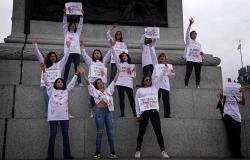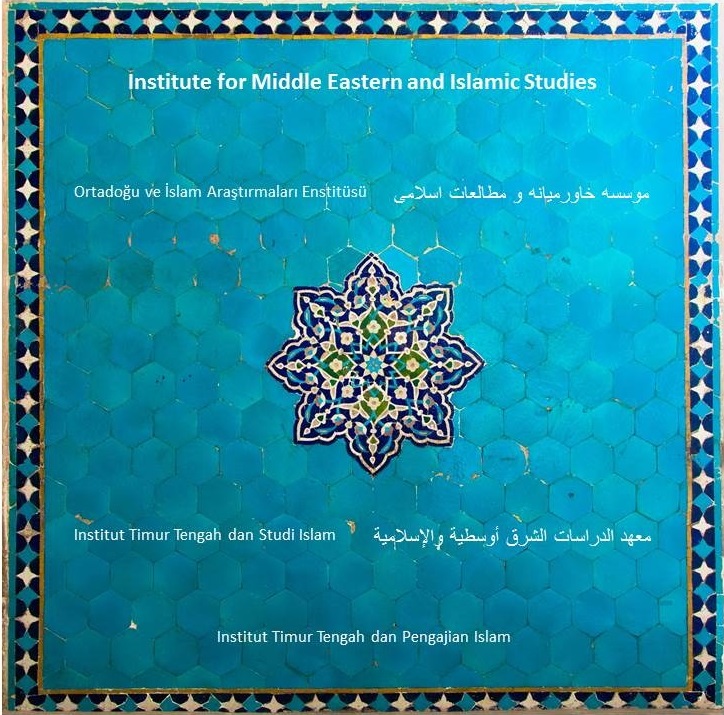The Iranian Protests: Change may not be immediate but is inevitable

Tom Walsh argues that Iran’s Gen Z-led movement constitutes a relentless, diversified, and fearless campaign against the Islamic Republic. Whilst real change may not come any time soon, the scars left by this protest are unhealable. This is the second in a four-part series following an event exploring these developments held at the Institute for the Middle East & Islamic Studies at Durham University.
Following the murder of Mahsa Amini on September 16th, the Iranian youth have spearheaded the country’s protests. Across social media, young people have shown their contempt for Ayatollah Khamenei, the Islamic Revolutionary Guards Corps (IRGC), and the foundations of the Islamic Republic. The fearlessness and determination of these “Zoomers” has been a constant, even in the face of brutal repression by the Iranian government. This article provides an overview of the specificity of this social media-driven protest, and the acute threat it poses to the longevity of the Islamic Republic.
The majority of Iran’s Gen Z were born after 9/11. For Middle East researchers and policymakers, it may initially seem impossible that an Iranian movement could comprise of people without direct experience of this pivotal event. President George W Bush’s “Axis of Evil” speech had a profound effect on those Iranians who heard it, uniting many against America. The Iranian youth of today represent a stark contrast. Tech-savvy and active across social media platforms, they are increasingly Westernised.
This protest can be partially understood through a generational lens. As Holly Dagres expertly expressed, Iran’s youth may not remember 9/11 or the threat posed by Saddam Hussein, but they do remember Khamenei denying them access to vaccines, and his brutal suppression of the 2009 Green Movement. They also look around and see his “Guidance Patrol” killing their brothers and sisters.
 As of 25th November, the national death toll is reported to be at 427. This includes 16-year-olds Nika Shakarami and Sarina Esmailzadeh and 22-year-old Hadis Najafi. All of these young women were active on TikTok and in supporting the protest movement. A video has circulated on social media of Nika Shakarami’s aunt and uncle being pushed into a forced confession on Iranian television. They were forced into saying that Nika fell. If one listens carefully, one can hear the morality police goading them, stating “say it, you scumbag”.
As of 25th November, the national death toll is reported to be at 427. This includes 16-year-olds Nika Shakarami and Sarina Esmailzadeh and 22-year-old Hadis Najafi. All of these young women were active on TikTok and in supporting the protest movement. A video has circulated on social media of Nika Shakarami’s aunt and uncle being pushed into a forced confession on Iranian television. They were forced into saying that Nika fell. If one listens carefully, one can hear the morality police goading them, stating “say it, you scumbag”.
Whilst the Iranian regime attempt to cover up their killings, social media is awash with support for the murdered girls and women’s families. Whilst some of the 300 million tweets may have been down to nefarious actors, the fact that there have been 300 million tweets on the Mahsa_Amini Persian hashtag is staggering. For context, the word Ukraine has only received 250 million Tweets since February. Even when removing consideration of Tweets by fake accounts, the Internet is noticeably awash with support for the women’s movement and calls for the end of the Islamic Republic.
Facebook, Twitter, and YouTube may be officially banned in Iran, but many young activists use VPNs (virtual private networks) to get onto the blocked sites. TikTok and Snapchat are their preferred mediums – far easier to access within the country. However, the Islamic Republic are trying to impose further restrictions with their “Regulatory System for Cyberspace Bill”, which would force Iranians to use their own highly monitored and censored Internet, known as the National Information Network. The Bill will also outlaw VPN use. Some of the forms of protest I have observed on social media are something I could not have imagined ever occurring, just over 2 months ago.
Currently incarcerated Iranian singer Shervin Harjipour’s song Barayay, which used anti-regime Tweets to construct a powerful protest song, has gone all around the world. Translated into multiple different languages across TikTok, supergroup Coldplay even welcomed exiled Iranian actress Goldshifteh Farahani onstage to perform a version in later October.
Women around the world have been cutting their hair in solidarity. Anti-regime memes have spread. Powerfully, the men’s football team refused to sing the national anthem before their World Cup opener against England. On Twitter, there are numerous videos of Iranian women slapping turbans off of clerics heads. School children are stamping on pictures of Khamenei, raising their middle finger towards his image, and chanting slogans including “Death to Khamenei”, “Independence, freedom, optional hijab”, and “Women, life, freedom”. Many women are removing their headscarves, and even burning them, on TikTok.
The Iranian women’s movement is not a new phenomenon. Dissent over the restriction of women’s rights dates back to the Revolution in 1979. In fact, many of the older generation are comparing the bravery of Gen Z to that of the women of the 1980s. This is not an anti-veil or even a secular uprising – but one based on the fundamental human right for women to choose. Westerners must be very careful about who they are listening to on this. These protests are unfortunately being co-opted by Islamophobic groups in Germany and India, who want to similarly limit women’s right to choice by banning the veil.
But this is not exclusively a Gen Z movement, nor one solely supported by women. Across generations and genders, Iranians have rushed to support the call for change. Over 18,100 people have been arrested to date. Union groups, civil rights activists, and members of older generations are taking to the streets in solidarity. Turnout for the Iranian election in 2021 was the lowest in history at 48.48%. This protest represents the breaking point for an already dissatisfied Iranian population.
That being said, the importance of this as a women’s movement must not be undermined. The median age of Iran is now 31.7. The mass support for the protests within the country are indicative of an increasingly independent, tech-savvy, population who feel the repressive patriarchal policies of the Islamic Republic do not speak for them. Farnush Ghadery articulated that this protest is not about one event, but part of a much longer intersectional feminist movement determined to provide rights to women, as well as to Kurdish and Baloch populations.
For the regime to fall, there needs to be dissent within the security services, military, or political elite. That does not look likely any time soon. But the legacy of the murder of Mahsa Amini, Nika Shakarami, Hadis Najafi, Sarina Esmailzadeh, and their peers will live on. The damage done is irreconcilable. Change will come in time – I consider it inevitable. This young population will never accept the repressive principles of yesteryear. Forward is their only direction. Women’s rights are human rights, and we must do everything we can to support the protests.
Part 1 - From Dissatisfaction to Mobilisation: The Islamic Republic’s Perfect Storm
Tom Walsh is a doctoral researcher at Durham University, studying the Iranian-Saudi rivalry and the war in Yemen. He teaches international relations at LSE and holds the position of Events Coordinator at Durham’s Institute for Middle East and Islamic Studies.
Image: Garry Knight via Flickr (CC0 1.0)


